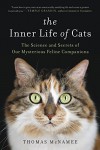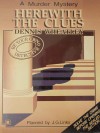Currently Reading






Find me elsewhere:
Do-It-Yourself Crime Solving from the Golden Age of Mysteries
You'd think that I get to read more than enough files (though not typically crime files) in my day job -- but gluttons for punishment that some of us mystery lovers are, there's nothing we like better than tracking down the murderer ourselves, instead of just reading about some super sleuth doing it for us ... or so the makers of the 1930s' Crime Dossiers / Crime Files series figured, and of course they were dead on target.
The idea was first conceived by English authors Dennis Wheatley and J.G. Links, whose Murder off Miami (aka File on Bolitho Blane) was such a raging success on both sides of the Atlantic that it inspired follow-ups in both the U.S. and in the UK: in the latter case, three more "Crime Dossiers" by Messrs. Wheatley and Links; in the U.S., Helen Reilly's File on Rufus Ray (Crime File No. 2), as well as File on Fenton and Far, and File on Claudia Cragge by Q. Patrick (aka Richard Wilson Webb and Hugh Wheeler) (Crime Files Nos. 3 and 4).
While the American "Crime Files" Nos. 2 and 4 (Rufus Ray and Claudia Cragge) are true collectors' items that continue to elude me for the moment, I've now read all four "Crime Dossiers" created by Dennis Wheatley and J.G. Links, as well as Q. Patrick's File on Fenton and Farr, and I'm in awe at the amount of ingenuity that has gone into creating these books. They really are extremely close to the real thing -- you get correspondence (including cablegrams) and file entries by the investigators as well as witness statements, handwritten documents, crime scene and witness photographs, entire newspapers containing reports on the crime (not merely individual reports but actually entire broadsheets!), and even honest-to-God tactile evidence such as blood-stained pieces of cloth, strands of hair, tubes of lipstick, and other items found at the crime scene or in a witness's possession. One can only guess at the amount of time and effort that must have gone into the creation of each and everyone of these books -- and they must have been tremendously expensive to produce, too; so no wonder that many of them (and all the originals from the 1930s) are rare collectors' items these days. Crimes scenes range from a yacht off the Florida coast to an English village not far from London, a castle on a remote Scottish island, small-town New Jersey, and a London night club; and the cast of characters -- in each book as well as in all of them taken together -- is as diverse as any that you might expect to find in the best of crime fiction.
This all being said, obviously you can't like all books equally well, however lovingly they are put together; and so far my favorites are Wheatley / J.G. Links's sophomore effort, Who Killed Robert Prentice? (which has downright fiendish elements; it is, however, solvable on the basis of the evidence provided) and Q. Patrick's File on Fenton and Farr ... the latter, if only for the fact that the authors even managed to work a funny-sweet romance between one of the detectives and the police chief's precocious secretary into the file. (Obviously it also helped that I managed to solve both of these cases substantially (Robert Prentice) / partly (Fenton & Farr) correctly, even if I reserve the right to quibble with some of the evidence in Fenton & Farr.
The weakest of the lot is, IMHO, The Malinsay Massacre; not so much because it consists very largely of correspondence but because the solution just plain doesn't make sense to me and some of the conclusions allegedly "forcing" themselves on the reader from individual pieces of evidence are implausible beyond belief. (OK, sour grapes, I admit. Still ...) -- Herewith the Clues, the final Wheatley / Links outing, is generally decried as weak as well; however, I actually prefer it to Malinsay -- it does present a genuine puzzle, and even if some of the clues / proposed deductions are maybe a bit far-fetched, a fair amount of them actually do serve a logical purpose in eliminating innocent suspects on the one hand and nailing down the murderer on the other hand. (Besides, the sheer number of fellow writers and society celebrities of their era that the authors managed to rope in for purposes of posing for "suspect" photos for Herewith the Clues is mind-boggling in and of itself -- in fact, this is the only volume where the true identities of the persons portrayed in the photographs are unveiled -- not least as this is a story dealing with IRA terrorism and some of the suspect biographies also point to Nazi Germany ... surely, in 1937, not exactly connections that many well-known Brits would have welcomed to see associated with their names; however much in a fictional context and with a disclaimer reading "the particulars regarding [name of fictional suspect] which are given in the script have, of course, no reference whatever to [real name of person portrayed], who very kindly posed for this photograph.")
Now, if only I could get my hands on at least halfway affordable copies of the File on Rufus Ray and the File on Claudia Cragge ...
In the interim, File on Fenton and Farr gets me another square in the Detection Club bingo -- "Across the Atlantic" (chapter 22), which at the same time completes bingo no. 4 ( all 4 corners + center square).
Individual ratings:
File on Fenton & Farr - 4 stars
Murder off Miami - 4 stars
Who Killed Robert Prentice? - 4.5 stars
The Malinsay Massacre - 3 stars
Herewith the Clues - 3,5 stars













 13
13  6
6 